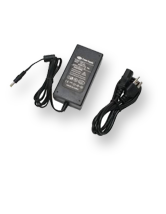| Robotic Solutions | Home - About us - FAQ - Blog - Contact |
|---|---|
 |
| Move over R2D2. Robots are no longer just posing for the camera lens – they’ve progressed to operating it! 
Twenty-first century broadcast robotics are becoming mainstay players in the studio. Initially robotic camera platforms were labeled as a job thieves, another way for conniving station managers to eliminate human jobs and salaries. |
The Computer Assisted Manufacturing technology which so dramatically transformed the world of manufacturing in the last two decades has morphed into an impressive array of bots that surpass the range and capability of human operated cameras in almost every environment. Witness cameras swooping over sports fields, careening from articulated jibs, and flawlessly executing complex XYZ ballets on the production stage – the applications and capabilities are blossoming to the delight of the program consumer. |
The opportunities for new dynamic movement are opening up the creative advantages of broadcast robotics, which cannot be replicated by traditional camera support platforms. |
Tekskil is confident that robotics will become the dominant studio camera platform in the immediate future - more and more broadcasters are taking the plunge into robotics to reap the benefits, and avoid getting left behind. |
Many of these robotic camera platforms are configured with camera prompters to support the on-screen Talent and that marriage has surfaced a number of technical challenges. The expanded range and velocity of robotic pan/tilts subjects the prompting system to major inertial forces that results in platform lurching, lens shudder and prompt monitor blurring - an unpleasant source of squints and delivery stumbles for the Talent and a loss of production quality for the station. |
|
Tekskil has worked closely with several robotic system manufacturers to engineer a stable prompting platform - a robust and innovative prompter architecture. |
 |
Beginning with the beamsplitter hood, the solid (and relatively heavy) walls of the beamsplitter enclosure have been transformed to a strong and lightweight frame. A light-proof matte black skin is stretched over the compound angles of the framework, much like an aircraft wing, adding to strength without increasing mass. Prompter displays are housed in exo-skeletal enclosures to improve rigidity and pare weight to a minimum. Traditional steel and aluminum mounting slabs are replaced with micro-truss elements,in some cases eliminated all together. And finally, active suspension elements have been designed to dampen unwanted motion, much like an automobile suspension system. |
Whether it’s a 5 pound prompting platform perched on an automated boom, or a gigantic 22” prompter head with an equally large talent monitor loaded onto a mobile 3 axis robotic pedestal. |
||
| Tekskil has a solution. | ||
Check out the links and then call us. We’re more than happy to discuss your challenges – |
||
|---|---|---|
 R R |
 |
 |
PTZ SOLUTIONS |
 |
||||
| Robotic Systems |
Software | Accessories | PTZ Solutions | Parts |
|---|